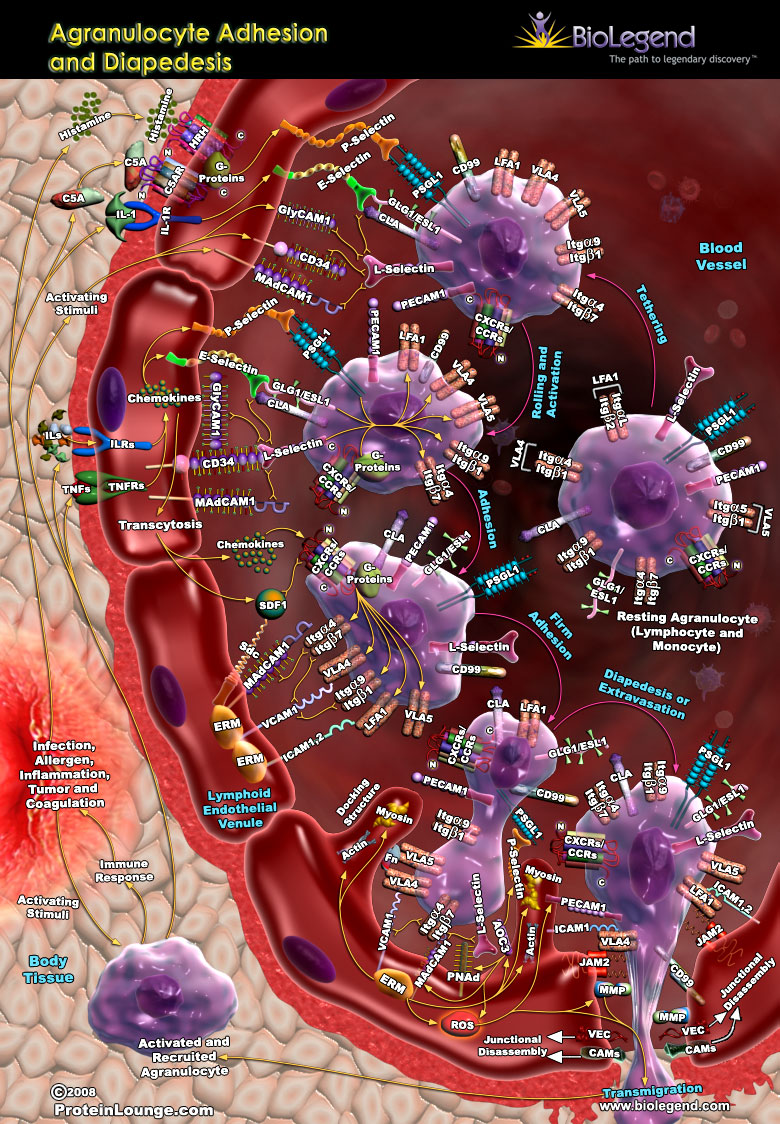Agranulocyte Adhesion and Diapedesis
As part of the innate immune response, leukocytes travel through blood vessels and migrate to sites of infection or tissue damage. Initially, macrophages at the affected site release chemokines including IL-1 and C5a. Signaling through these chemokines results in the expression of adhesion molecules, including E-selection and P-selection, on nearby endothelial cells. Glycoproteins present on circulating leukocytes bind to these adhesion molecules with relatively low affinity allowing for leukocytes to roll along the blood vessel. Other chemokines signal for the activation of integrins on the leukocyte cell surface. These activated integrins can bind with high affinity to adhesion molecules, like VCAM and ICAM, on the endothelial cell. Next, the leukocyte passes through the endothelium in a process known as diapedesis. In this process, cytoskeletal rearrangements within both the cell and endothelium allow for the leukocyte to pass through an opening into the interstitial fluid, a process aided by the presence of PECAM on the leukocyte surface. Once the leukocyte has completed extravasation, it can transmigrate to the site of infection to aid in the immune response.
Click on the poster below to view the interactive version.
 Login / Register
Login / Register 








Follow Us